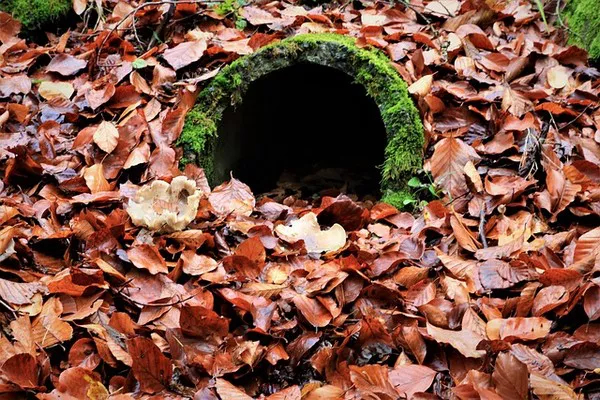Sewage sludge, a byproduct of wastewater treatment, requires careful and environmentally responsible handling to minimize its impact on public health and the environment. The treatment of sewage sludge involves several processes aimed at reducing pathogens, stabilizing organic matter, and mitigating potential environmental contaminants. In this comprehensive article, we delve into the various methods used for sewage sludge treatment, their effectiveness, and the emerging trends in sustainable sludge management.
Introduction to Sewage Sludge
Sewage sludge is the semi-solid residue left behind after the treatment of wastewater. It contains a mixture of organic and inorganic materials, including water, organic solids, pathogens, nutrients, heavy metals, and other contaminants derived from domestic, industrial, and commercial sources. The composition of sewage sludge can vary widely depending on the source and treatment processes.
Why Treat Sewage Sludge?
Raw sewage sludge poses significant health and environmental risks due to its high pathogen content, unpleasant odor, and potential for contamination. Proper treatment is essential to:
Reduce Pathogens: Eliminate disease-causing organisms to prevent public health hazards.
Stabilize Organic Matter: Break down organic materials to reduce odor and methane production.
Minimize Contaminant Release: Control the release of heavy metals, pharmaceuticals, and other pollutants into the environment.
Prepare for Safe Disposal or Reuse: Ensure that sludge can be safely disposed of or reused in beneficial applications like agriculture or energy production.
Primary Treatment Methods
1. Thickening
The first step in sewage sludge treatment is thickening, which increases its solid content and reduces its volume. Common thickening methods include gravity thickeners, dissolved air flotation, and centrifugation. Thickening reduces the cost and energy requirements of subsequent treatment processes.
2. Stabilization
Stabilization processes aim to reduce the biodegradability and odor of sewage sludge while destroying pathogens. The two primary methods of stabilization are:
Aerobic Digestion: Utilizes oxygen to break down organic matter, reducing odors and pathogens. It produces carbon dioxide and water as byproducts.
Anaerobic Digestion: Occurs in the absence of oxygen, converting organic matter into methane (biogas) and carbon dioxide. Anaerobic digestion is more energy-intensive but yields renewable energy.
3. Dewatering
Dewatering removes excess water from sludge, further reducing its volume and weight. Common dewatering techniques include belt presses, centrifuges, and filter presses. Dewatered sludge is easier to transport and handle for final disposal or reuse.
Advanced Treatment Methods
1. Thermal Treatment
Thermal treatment methods subject sewage sludge to high temperatures to destroy pathogens and reduce its volume. The two main thermal treatment methods are:
Incineration: Combusts sludge at high temperatures, producing ash and flue gases. Modern incineration plants can recover energy from the process.
Pyrolysis/Gasification: Converts sludge into biochar, syngas, and oils through controlled heating in the absence of oxygen. This process can generate bioenergy and valuable byproducts.
2. Chemical Treatment
Chemical treatment involves the use of chemicals to stabilize sludge, reduce pathogens, or remove contaminants. Common chemical treatment methods include:
Lime Stabilization: Raises pH levels to reduce odors and pathogens.
Coagulation/Flocculation: Adds chemicals like ferric chloride to facilitate the removal of heavy metals and suspended solids.
Advanced Oxidation Processes: Uses chemical oxidants like ozone or hydrogen peroxide to degrade organic contaminants.
3. Biological Treatment
Biological treatment harnesses microorganisms to break down organic matter and remove pollutants. Emerging biological treatment methods include:
Phytoremediation: Uses plants to uptake nutrients and contaminants from sludge.
Bioaugmentation: Introduces specialized microbes to enhance degradation of specific pollutants.
Environmental Considerations
The treatment and disposal of sewage sludge must consider environmental impacts to ensure sustainability:
Pathogen Control: Effective treatment is crucial to prevent the spread of waterborne diseases.
Nutrient Recycling: Sludge can be rich in nutrients like nitrogen and phosphorus, which can be recycled for agricultural use.
Heavy Metal Contamination: Proper treatment prevents heavy metals from leaching into soil and water bodies.
Energy Recovery: Thermal treatment methods can generate renewable energy from sludge.
Emerging Trends in Sludge Management
Recent advancements in sludge management focus on sustainability, resource recovery, and circular economy principles:
Resource Recovery: Extracting energy, nutrients, and materials from sludge for reuse.
Decentralized Treatment: Implementing smaller-scale treatment systems closer to the source of sludge generation.
Biological Upgrading: Developing microbial processes to enhance biogas production and reduce sludge volume.
Smart Technologies: Integrating sensors and automation to optimize treatment processes and resource recovery.
Conclusion
Sewage sludge treatment plays a critical role in safeguarding public health and protecting the environment. By employing a combination of physical, chemical, and biological treatment methods, sewage sludge can be transformed into a valuable resource. Emerging trends in sludge management prioritize sustainability and resource recovery, paving the way for innovative solutions to address the challenges of sewage sludge treatment in the 21st century.
In conclusion, continuous research and investment in sewage sludge treatment technologies are essential to promote sustainable practices and ensure the safe management of this challenging waste stream.

